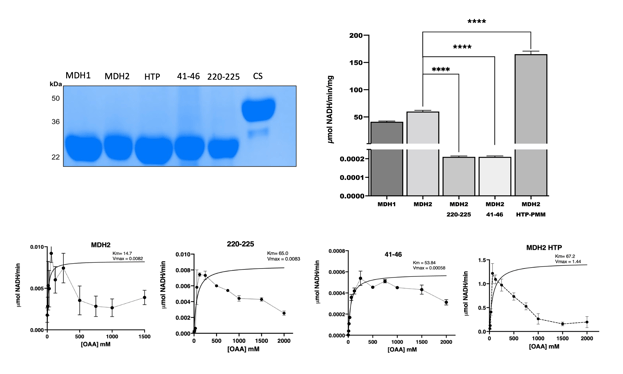When Karl Barry Sharpless was awarded this year’s Nobel Prize in Chemistry, he joined an elite club, becoming just the fifth repeat Nobel Prize winner in history. Interestingly, he also adds to the disproportionately large number of honorees to have trained under a previous laureate (Zuckerman, 1977; Ma et al., 2020). Many have interpreted this trend as evidence that the best teachers and mentors pass on more than just technical knowledge, shaping their trainees’ very way of thinking too. Albert Einstein might have put it best when he stated, “the value of an education . . . is not the learning of many facts but the training of the mind to think something that cannot be learned from textbooks” (Brian, 1996). But is it possible to bring the kinds of transformative educational experiences afforded to those fortunate enough to apprentice with top scientists to larger groups of trainees at an earlier point in their careers?
A CURE for Biochemistry
Undergraduate biochemistry courses are often associated with rote memorization of metabolic pathways (precisely the type of exercise Einstein might have resented!). In 1997, Joseph Provost, then a new faculty member at Minnesota State (and now Professor of Chemistry and Biochemistry at the University of San Diego), decided to take a different approach. His own most impactful learning experiences happened in the lab, and he wanted to provide the same kinds of opportunities for his students. But he also found that his teaching responsibilities left him with limited time for one-on-one mentoring. His solution? Bringing his research into the classroom.
I had the opportunity to talk with Provost recently about his development of what is now commonly termed a Course-based Undergraduate Research Experience (CURE). Having incorporated a discovery-based lab on planarian regeneration into one of my own courses, I was excited to hear about how he developed his program.
Initially, Provost made his labs completely open-ended, allowing every student to work on any topic of interest. The result was a positive experience for the class but one that left him overwhelmed. Therefore, he decided to adopt a more focused format, where all students work on malate dehydrogenase (MDH), a citric acid cycle enzyme he studied during graduate school. As a stable, easily purified protein with easily measured activity, MDH is particularly amenable to in-class labs. Provost ultimately settled on a two-semester model, in which students learn to express, purify, and analyze MDH in semester one and then proceed to use those skills to design and carry out their own novel experiments in semester two (Knutson et al., 2010a,b).

|
|
Fig. 1: Undergraduates in Provost’s CURE prepare to analyze their recently purified MDH to study the impact of phosphorylation on the enzyme’s structure, function, and interaction with other proteins. |
It is important to note that research activities in a CURE must be authentic – students should be attempting to generate new knowledge that will be of genuine interest to other researchers in their field. Indeed, sharing results with the broader scientific community represents the culmination of many such experiences. For example, students in Provost’s course recently used a combination of phylogenetic analysis, structural prediction, and bench work to identify regions of MDH that interact with citrate synthase and presented their findings at the American Society for Biochemistry and Molecular Biology Annual Meeting. Some of my students published their work identifying new genes required for stem and progenitor cell maintenance in planarians in Developmental Biology (Kimball et al., 2020).
Benefits and Challenges
CUREs inspire students to take ownership of their work and become more actively involved in the learning process. As trainees become more comfortable with the open-ended nature of research, they gain confidence and learn to work independently, which can lead to greater success in meeting educational goals (Kowalski et al., 2016; Scott, 2021). In fact, completion of Provost’s CURE increased students’ confidence in their research capabilities and laboratory and critical thinking skills (Knutson et al., 2010a,b). Classroom-based research projects have also been proposed as a mechanism for increasing diversity and inclusion in STEM disciplines (Bangera & Brownell, 2014; Duboue et al., 2022), as they increase student interest in scientific career paths while also broadening access to experiences that promote professional success (many of my students include their in-class research experience on their resumes).
CUREs are not without challenges. Real research is messy, and it can be difficult to give up the control embedded in “cookbook” lab activities (follow the recipe, and you get a predetermined result). Professors and students must be willing to improvise, trading structure and predictability for improved learning outcomes and the opportunity to make new discoveries. Provost notes the importance of acknowledging student apprehensions about “failure” (protocols not working, hypotheses being rejected, etc.), while reminding participants of the value of this approach and encouraging them to engage in the problem-solving process. His previous experiences as a jazz musician, serviceman in the U.S. Army, and hockey coach all shaped his teaching style, with the former offering excellent training in improvisation and the latter making him a more effective motivator (“be like Tony Robbins!” he encourages faculty mentors.)
Collaboration Maximizes Reach
Many new professors are wary of the time and effort and/or perceived professional risk involved in setting up a CURE, especially if it’s a new approach within their department. So in 2016, Provost partnered with colleagues at other institutions to form a support network called the MDH CUREs Community (MCC) that seeks to reduce barriers to implementation. Funded by the NSF (with Co-PIs Jessica Bell, Lisa Gentile, Ellis Bell, and Amy Springer), this group now connects MDH-focused CUREs at 50 schools, ranging from R1 institutions to community colleges, and has helped provide original research experiences for thousands of undergraduates. The MCC develops and makes freely available technical and pedagogical resources, offers mentoring for instructors, and provides opportunities for students to exchange ideas and results with peers and faculty at other institutions. Provost believes these networking experiences increase student enthusiasm, and research backs up that view (Callahan et al., 2022).

|
|
Fig. 2: Students in an MDH CURE replaced select residues of human mitochondrial MDH (hMDH2) with those from human cytosolic MDH (hMDH1). They then expressed the original and recombinant enzymes in bacteria, purified them to near homogeneity using a 6XHis tag, and compared their specific activities by measuring NADH production. |
CUREs are beginning to transform undergraduate education in the sciences by making a greater number of students active participants in the research process – so if this sounds like an exciting opportunity for your classroom, I highly recommend you try implementing one. It's likely only a matter of time before a CURE trainee goes on to win a Nobel!
 Jason Pellettieri is Professor and Chair of the Biology Department at Keene State College in New Hampshire. He mentors undergraduates conducting NIH- and NSF-funded research on planarian flatworms both in and out of the classroom.
Jason Pellettieri is Professor and Chair of the Biology Department at Keene State College in New Hampshire. He mentors undergraduates conducting NIH- and NSF-funded research on planarian flatworms both in and out of the classroom.
References and Resources
References
Bangera, G., Brownell, S. 2014. Course-based undergraduate research experiences can make scientific research more inclusive. CBE Life Sciences Education. 13(4):602-606.
Brian, D. 1996, Einstein: A Life. Chapter 17, Einstein Discovers America. New York./
Callahan, K., Peterson, C., et al. 2022. External collaboration results in student learning gains and positive STEM attitudes in CUREs. CBE Life Sciences Education. 21(4):ar74.
Duboue, E., Kowalko, J., Keene, A. et al. 2022. Course-based undergraduate research experiences (CUREs) as a pathway to diversify science. Evolution and Development. 24(5):127-130.
Kimball, C., Powers, K., Dustin, J., Poirier, V., Pellettieri, J. 2020. The exon junction complex is required for stem and progenitor cell maintenance in planarians. Developmental Biology. 457:119-127.
Knutson, K., Smith, J., Wallert, M., Provost, J. 2010a. Bringing the excitement and motivation of research to students; Using inquiry and research-based learning in a year-long biochemistry laboratory: Part I – guided inquiry – purification and characterization of a fusion protein: Histidine tag, malate dehydrogenase, and green fluorescent protein. Biochemistry and Molecular Biology Education. 38(5):317-323.
Knutson, K., Smith, J., Nichols, P., Wallert, M., Provost, J. 2010b. Bringing the excitement and motivation of research to students; Using inquiry and research-based learning in a year-long biochemistry laboratory : Part II – research-based laboratory – a semester-long research approach using malate dehydrogenase as a research model. Biochemistry and Molecular Biology Education. 38(5):324-329.
Kowalski, J., Hoops, G., Johnson, J. 2016. Implementation of a collaborative series of classroom-based undergraduate research experiences spanning chemical biology, biochemistry, and neurobiology. CBE Life Sciences Education. 15(4):ar55.
Ma, Y., Mukherjee, S., Uzzi, B. 2020. Mentorship and protégé success in STEM fields. Proceedings of the National Academy of Sciences, U.S.A. 117 (25):14077-14083.
Scott, K. 2021. Classroom undergraduate research experiences are a “CURE” that increases engagement by students and teachers. FEMS Microbiology Letters. 368(6):fnab036.
Zuckerman, H. 1977. Scientific Elite: Nobel Laureates in the United States. Free Press. New York.
Resources
Topics: Education





Leave a Comment